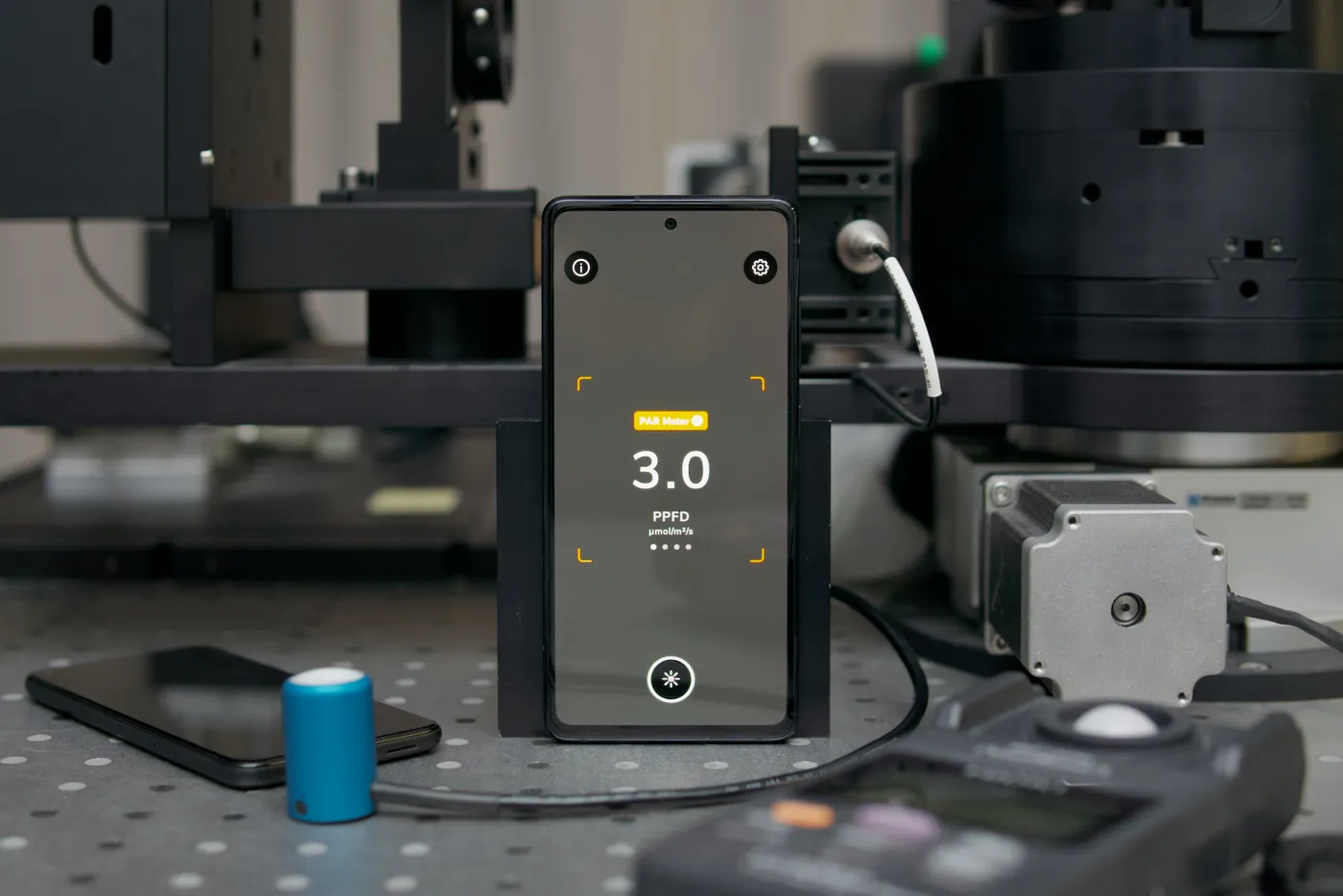
Auto-Translate
This post represents a condensed version of our in-depth plant light meter app test for Android and iOS phones.
Contents
If you're in a hurry, you'll get all the info you need. Otherwise, you'll probably want to dive into the full article:
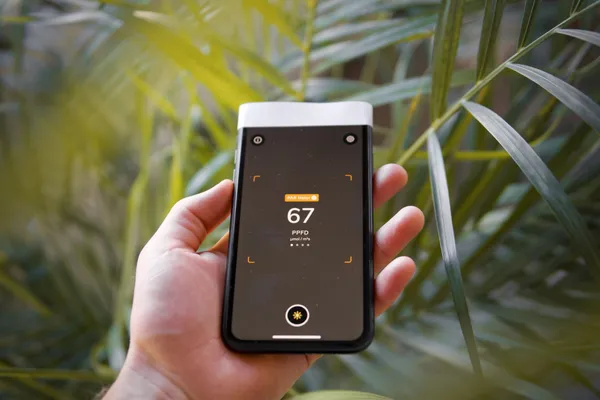
The Android Platform
There are light meter apps for Android – in fact, many of them. The issue with all the light meter apps that we are aware of on the Android platform is the way they measure: All of them seem to use the built-in ambient light sensor that can easily be accessed by any software developer. This seems great at first glance, as the ambient light sensor is directly delivering you the illuminance in lux that you can then use in your app. However, using the ambient light sensor incorporates some issues:
- It can be dangerously inaccurate. The sensor is mainly used to dim the screen brightness according to the available ambient light, which does not require much accuracy at all.
- It is measuring illuminance. Illuminance represents light as perceived by the human eye. For plants, we need to measure PPFD that resembles the PAR spectrum.
- It is highly directional. High-quality light meters respond to light from different directions based on the cosine-law, which the ambient light sensor does not. This means that depending on the reflectivity of your surrounding area (e.g. grow room), you'll get different measurements.
When diving deeper into the usage of the ambient light sensor, it also becomes evident that its accuracy, precision, and directionality is highly dependent on the phone model that you are using. Some seem to measure acceptably accurate within a given range whereas others are just dangerous to use for anything else but changing the screen brightness. This also leads to the issue that Android light meters might seem trustworthy due to acceptable results on a certain phone model in a certain scenario.
Android PPFD Meter App Test
When comparing light meter apps, we'll look at the following factors:
- Ease of use
- Measurement of PAR as PPFD
- Accuracy and precision
- Cost-efficiency
- Developer activity (supporting the latest devices, offering support, etc.)
We’ll cover each of these criteria in our subsequent test and recommendation to gain you the peace of mind needed when it comes to choosing your PPFD meter app for Android.
Accuracy Comparison
As we are first and foremost comparing light meters, they need to measure accurately. Our tests revealed that most apps are comparingly accurate when it comes to "white" full spectrum lighting, but heavily differ when measuring "blurple" red / blue LED light. The accuracy of all illuminance-based plant light meter apps comes down to the built-in ambient light sensor that proves fairly accurate on our Samsung Galaxy S10 test device. When converting this illuminance measurement to PAR however, the apps differ wildly!
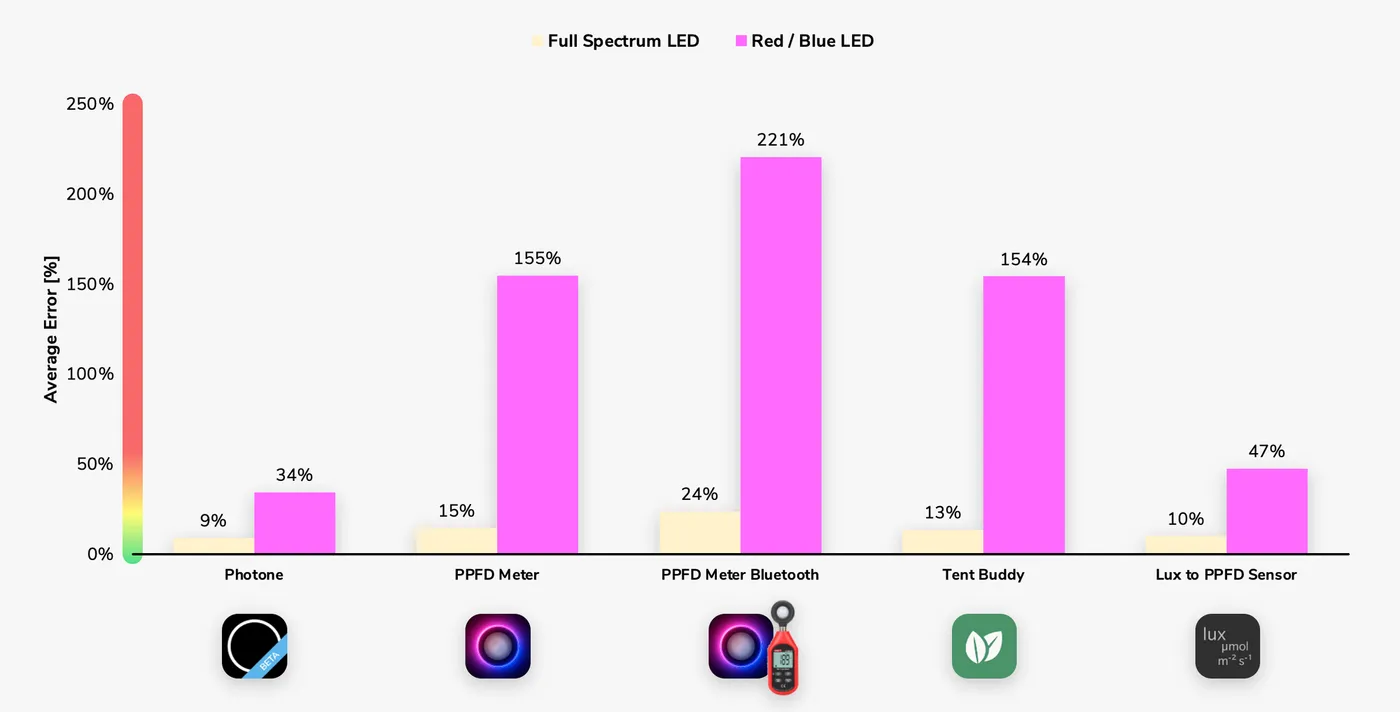
A small error is to be expected as no light meter exactly measures the same, but any error exceeding 10% becomes noteworthy whereas errors upwards of 30% even become dangerously critical.
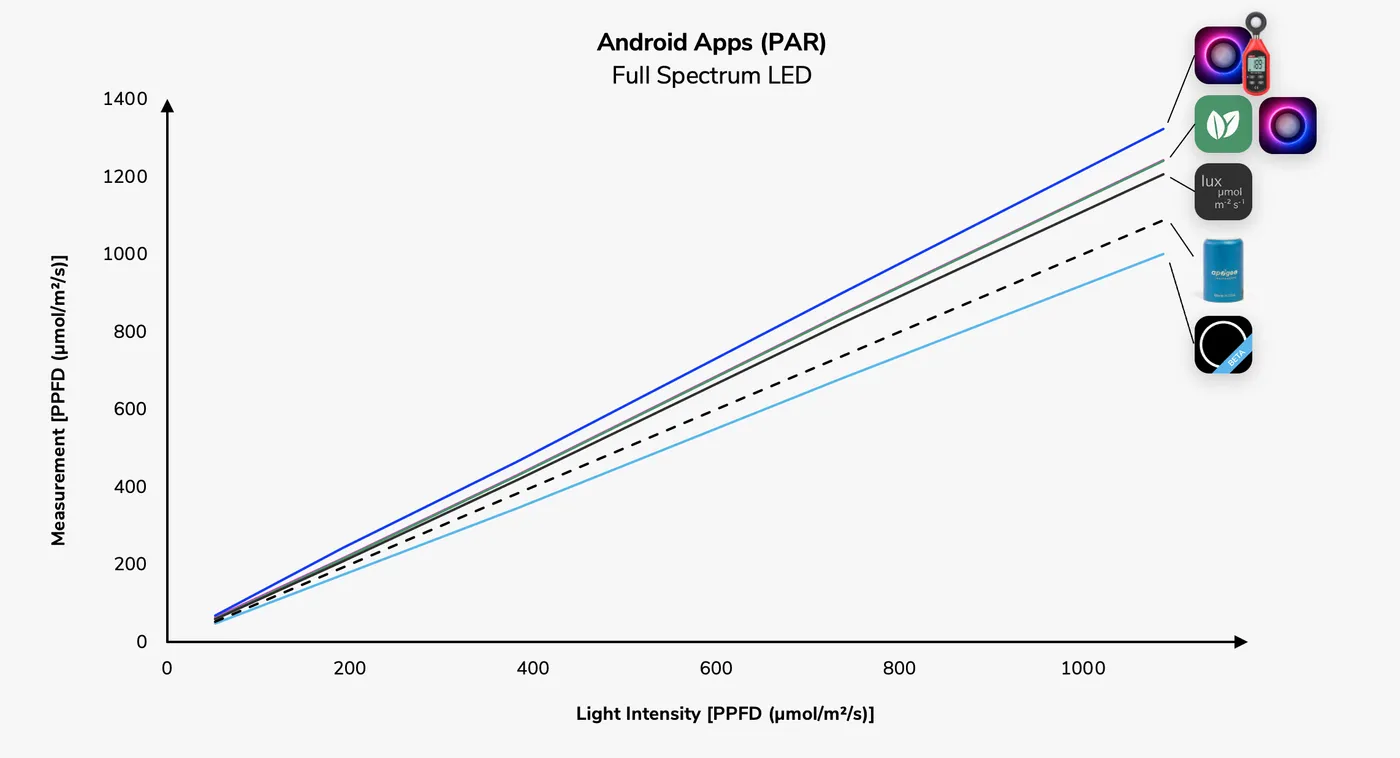
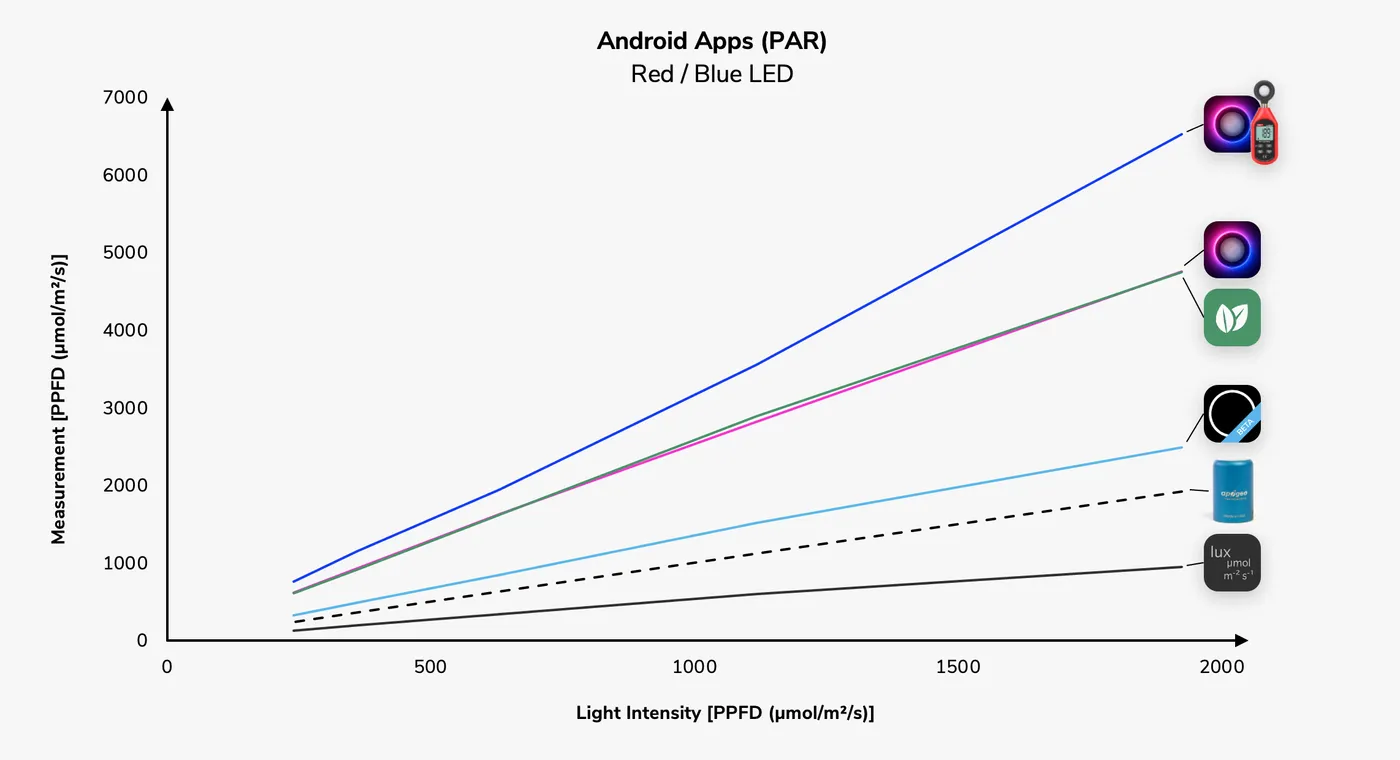
You can find all detailed measurements and how we took them in the in-depth article.
Recommended for Everyone: Photone - Grow Light Meter for Plants

The Photone - Grow Light Meter for Plants is our own app and we don't want to advertise you anything without our full backing. Our Android version is still in its Beta phase and not as accurate as our iOS version on all of the 20'000 Android devices we're supporting, but also no less accurate than the other apps we've tested. The app also includes helpful guides and a calculator for cannabis, houseplants, and fruits or vegetables to assist you with your grow lighting decisions, giving you a further edge over using another app.
Recommended for Technicians: Tent Buddy

Tent Buddy is a fairly simple app for anyone that already understands the technical details of PAR, PPFD, and DLI and seems to be tailored to cannabis. The app is still in its version 1.0.0 since years and there is no developer activity so this can be an issue on the latest devices and Android versions. For most advanced growers, it includes what is needed and does a good job delivering it. However, it does not allow for any calibration so you might have to do some manual calculations as well. Never use it to measure the PPFD of your red / blue LED equipped grow room as the error in our test was enormous!
Not Recommended: PPFD Meter - Grow Light Meter

The PPFD Meter app includes many features for the advanced indoor horticulturist and is regularly updated. This is great if, for instance, you want to create your own PAR map and know exactly what you do, but also increases the app's complexity which makes it a bit hard to configure. Still, the app offers all the features you need and can aid your grow lighting decisions. If you don't need all of those features, it can be viewed as a more complicated version of Tent Buddy ( including the same light settings) that also bombards you with advertising or wants to sell you on a subscription. Also, never use it to measure the PPFD of your red / blue LED equipped grow room as the error was enormous!
We also tested the PPFD Meter app with a Uni-T UT383 BT lux meter that can easily be integrated via Bluetooth and promises increased accuracy. However, this has not been the case in our tests: The Uni-T UT383 BT meter measured way higher than our reference lux meter and was especially worse at measuring red / blue LED lighting with an error of 221%! Using the Bluetooth meter didn't increase accuracy on our device but still offers some usability benefits that might come handy.
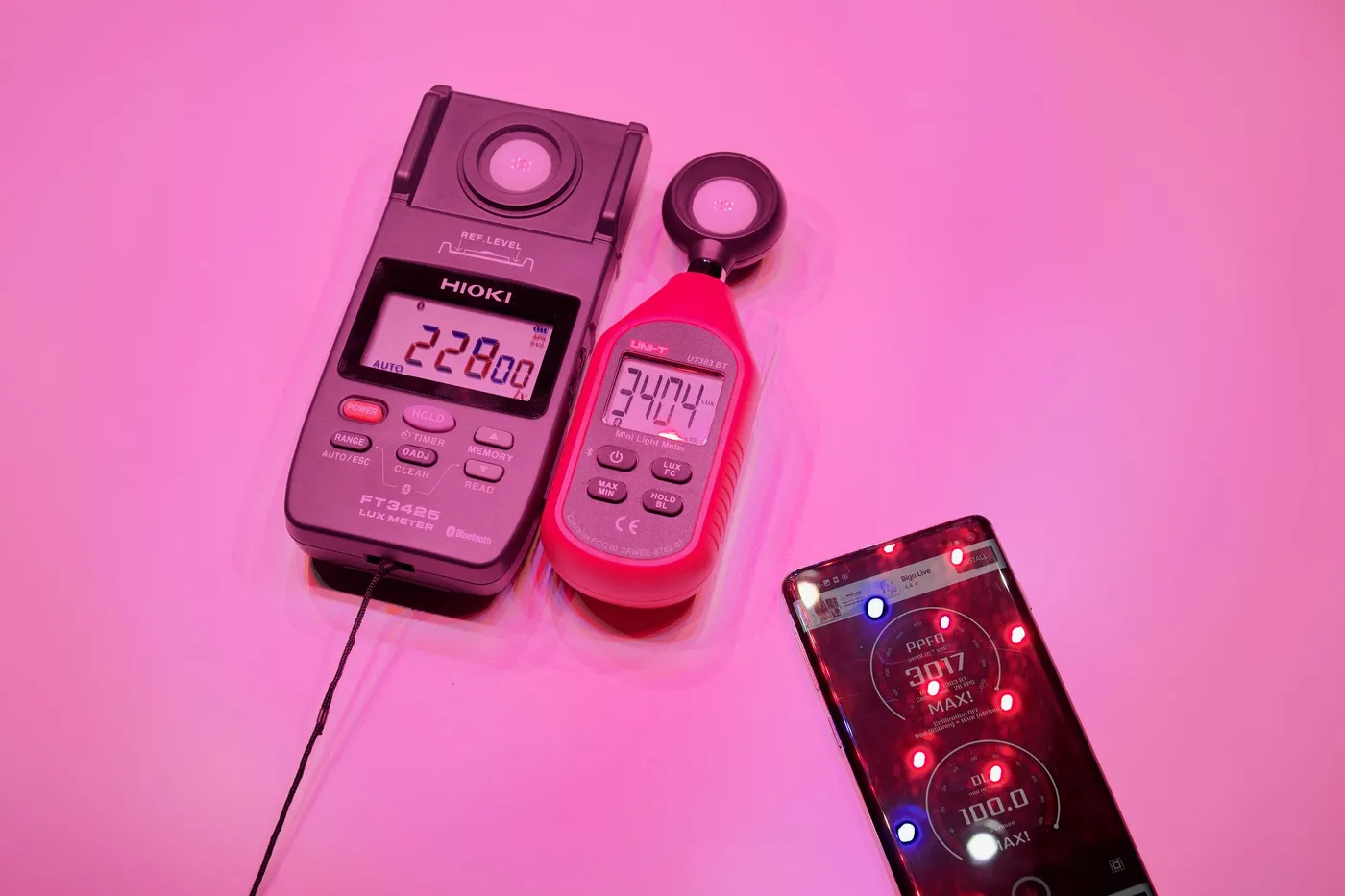
Not Recommended: Lux to PPFD Sensor
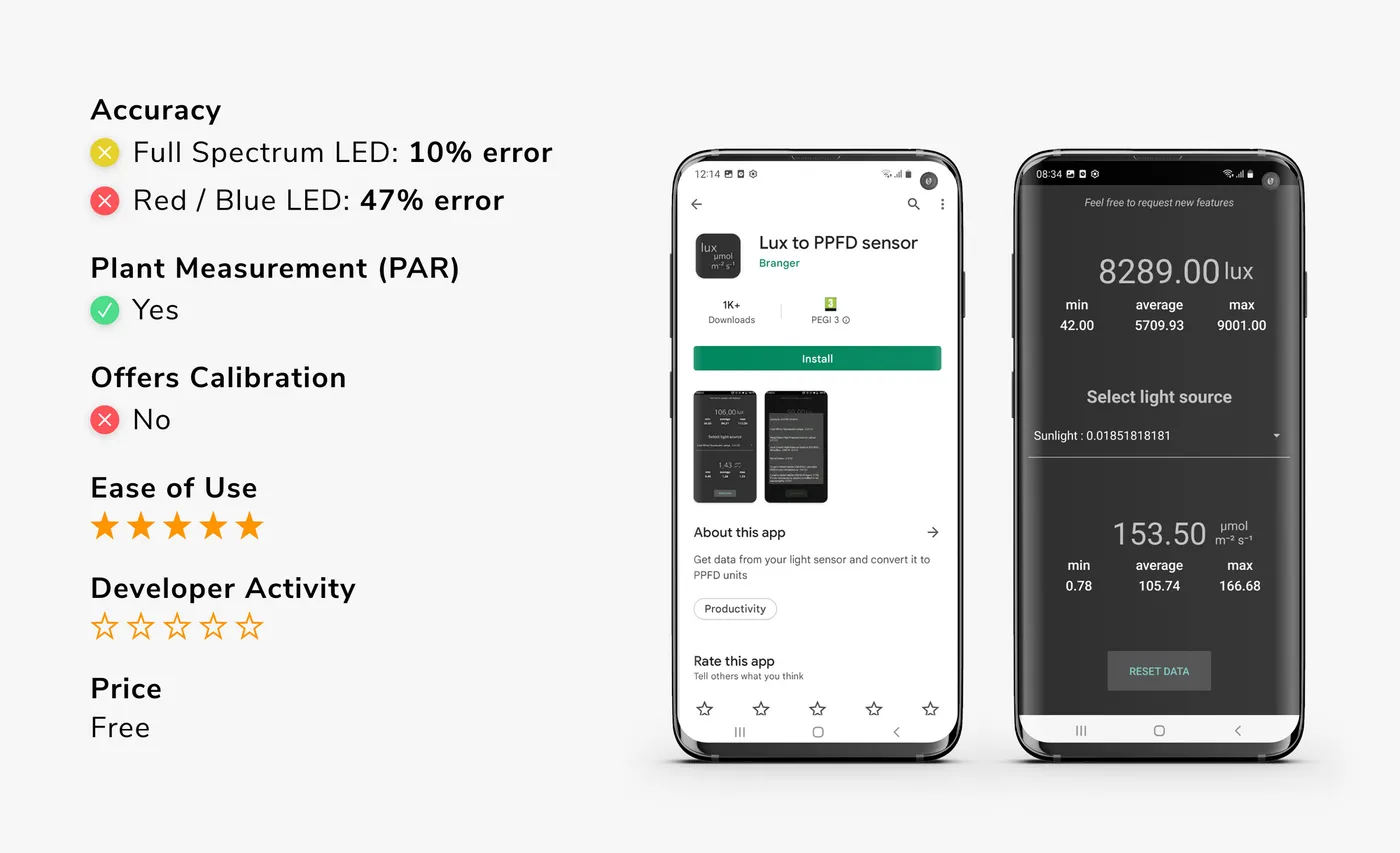
The Lux to PPFD Sensor app is very similar to the Tent Buddy app but supports less light sources. For instance, none of our LED lights was covered on the selection and we were forced to use the sunlight setting as the closest match. The app is still in its version 1.0.0 since years and there is no developer activity so this can be an issue on the latest devices and Android versions. We don't recommend to use it at all.
Photone for Android
As you should know by now, simply taking the measurement of the ambient light sensor as-is won't do the trick. Therefore, we are spending a significant amount of our energy on research to achieve accurate measurement results across different light levels and on different phone models. While we are doing so, we decided to keep our Android version in a completely free public Beta available for limited early access.

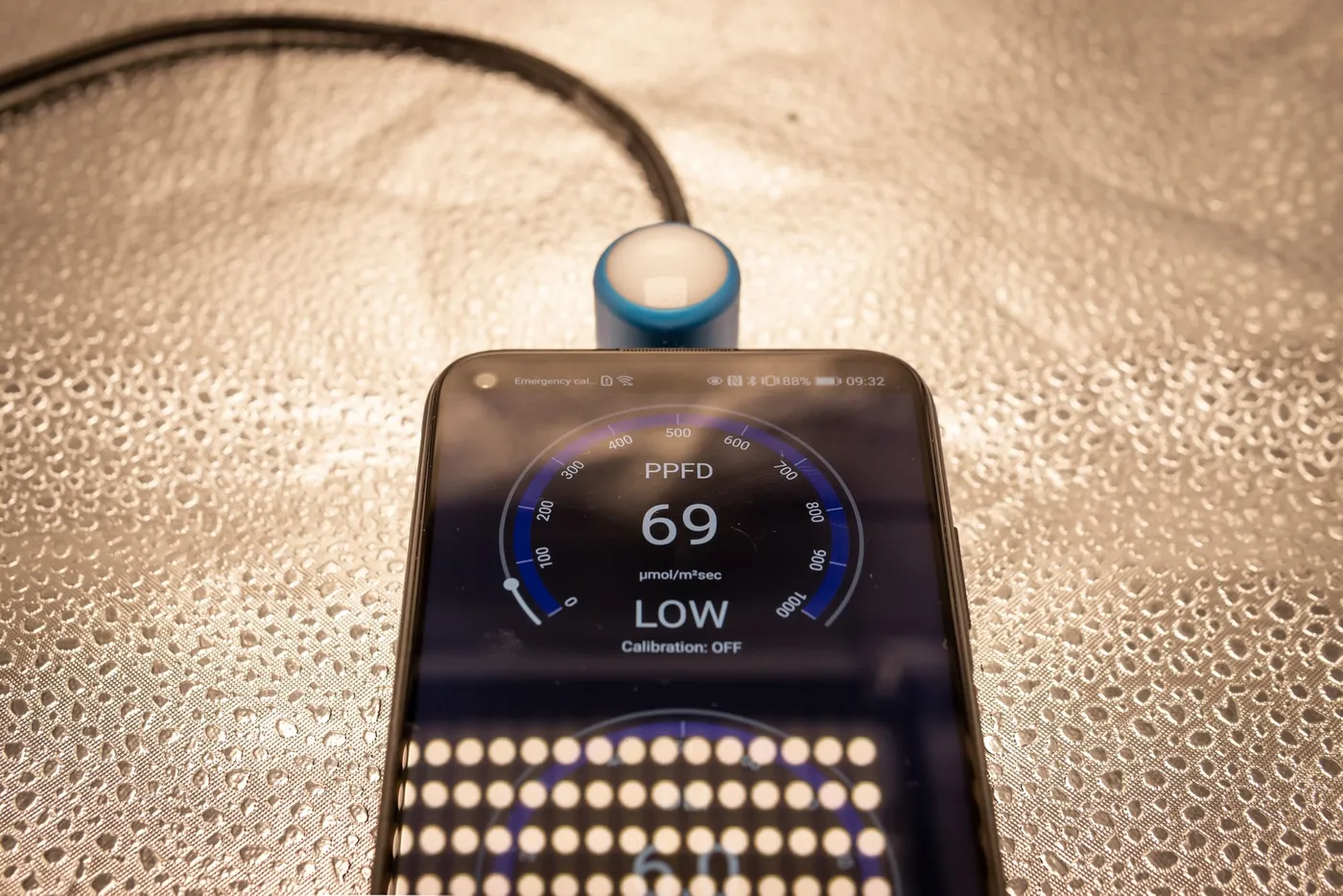
 Share This
Share This





